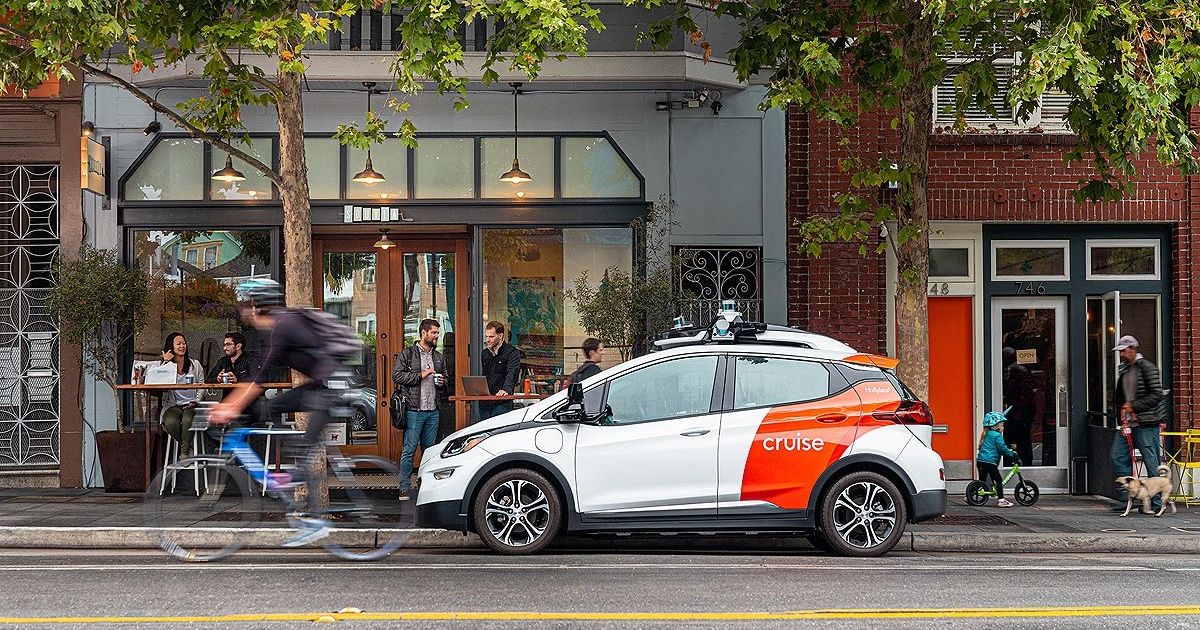
General Motors Cruise on Thursday became the first company to secure a permit to charge for self-driving car rides in San Francisco, after it overcame city officials’ objections.
Self-driving test cars with human safety drivers have become a constant sight in San Francisco, and completely driverless ones are increasingly common too. Turning them into a fledgling business in a major U.S. city marks a milestone in the long, delayed journey toward driverless taxi service.
The permit was Cruise‘s final hurdle in California. Cruise said it would launch paid services within the next couple of weeks using up to 30 driverless Chevrolet Bolt electric vehicles.
The California Public Utilities Commission approved Cruise’s permit late Thursday in a 4-0 vote.
Commissioner Clifford Rechtschaffen said during the meeting the panel had been “taking a careful, incremental approach” to regulating autonomous vehicles.
“This resolution marks another important step in that effort,” he said. “It will allow our staff to continue to gather very important data that will support the development of future phases.”
Cars will be limited to a 30 mph maximum speed, a geographic area that avoids downtown and the hours of 10 p.m. to 6 a.m. They will not be allowed on highways or at times of heavy fog, precipitation or smoke.
Disability and business groups had expressed support, and staff for the state commission had said Cruise’s proposal reasonably protects passenger safety.
Citing concerns that unusual behavior by the cars could result in bodily harm, San Francisco fire, police and transit officials wanted state regulators to impose restrictions before allowing Cruise into the ride-hailing business. They recommended requiring further approval to add more cars and a new working group of state and local officials.
The local officials said a confused Cruise AV briefly blocked a San Francisco fire engine in April en route to a three-alarm fire, and days earlier a driverless Cruise car stopped by police appeared to drive away before the officer was done. Cruise said its cars made safe decisions.
While rival Alphabet Inc’s Waymo has charged for rides in suburban Phoenix since 2018, Cruise’s proposed deployment in San Francisco, its hometown, is a more densely populated, hilly and unpredictable area, considered by tech experts the greater challenge.
Waymo has given employees driverless rides in San Francisco since March, and Cruise has offered free late-night test rides to the public since February.
But there also is a longstanding issue that self-driving cars cannot always correctly predict how humans will react to changing events, including the actions of the car. Cruise has even given the issue a name, the “couples problem,” a former employee said.
In the decade since California first allowed public testing of self-driving vehicles, smooth rides following traffic rules are the norm, but surprises persist.
In a public presentation last year, Cruise senior director Brandon Basso described “kinematic uncertainty,” a challenge self-driving cars face in predicting human actions on the road and deciding, for instance, when to yield.
Cruise said its vehicles understand complex social dynamics and hedge against uncertainty by taking safe actions.
Even the San Francisco officials who challenged the permit said that despite “the conspicuous exceptions, the driverless Cruise AV appears to generally operate as a cautious and compliant defensive driver.”
Though self-driving cars can adapt to nearby rule-breakers, “human error or behavior such as a road rules violation that diverges from the probable behavior patterns is a factor in a disproportionate number of collisions,” Waymo told Reuters in a statement.
Cruise does not reveal what three former employees say are two key safety statistics internally: how often its cars encounter novel situations or experience what it calls “safety-critical incidents,” a combination of accidents and near-misses.
Public records seen by Reuters show Cruise with its computers in control suffered 34 accidents involving bodily harm or more than $1,000 in damage across nearly 3 million miles of driving during a four-year span ended May 2021.
The documents, which Cruise unredacted in February in response to a Reuters request, show its attempts to avoid repeat collisions.
For 28 of the cases, Cruise pursued technological fixes, which often were related to improving predictions of what humans will do. It also has relaxed some rules: including a response to a 2019 accident allowing the car to “adjust strict adherence to all marked lanes,” so it could move around parked trucks or slow cyclists.
Waymo in January sought a court order to preserve the confidentiality of its comparable data, calling it trade secrets. The state did not oppose the request, and Waymo’s records remain redacted.
Some accidents have led to lawsuits. A bicycle courier and a scooter rider have sued Cruise, and Waymo settled over a 2016 car accident.
Cruise said the car was not self driving during the scooter incident and is fighting the case.
Bicyclist Christopher McCleary, who last month settled his lawsuit, said he has suffered ongoing injuries from crashing into a Cruise car he said came to an unexpected halt in San Francisco in 2018, and he questions the experimentation of driverless cars in public.
“Unfortunately,” he said by email, “I feel like Cruise ‘learned’ from hitting me and this is actually a sacrifice I had to make to allow Cruise to become ‘better’ at predicting situations.”